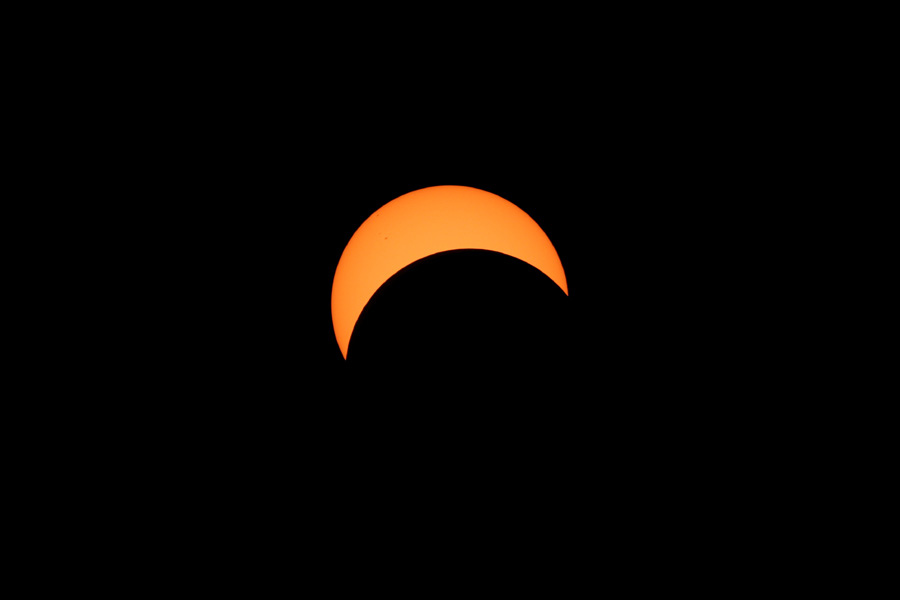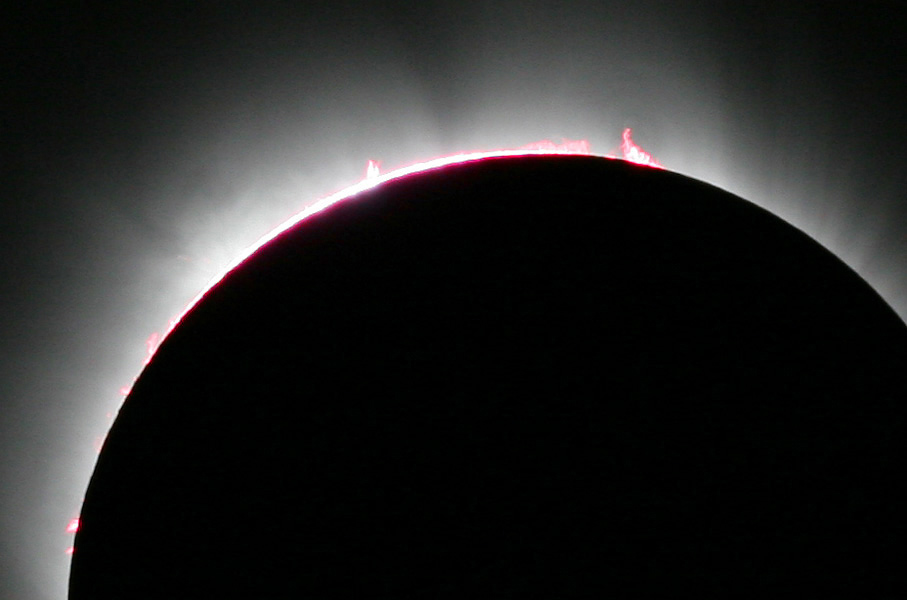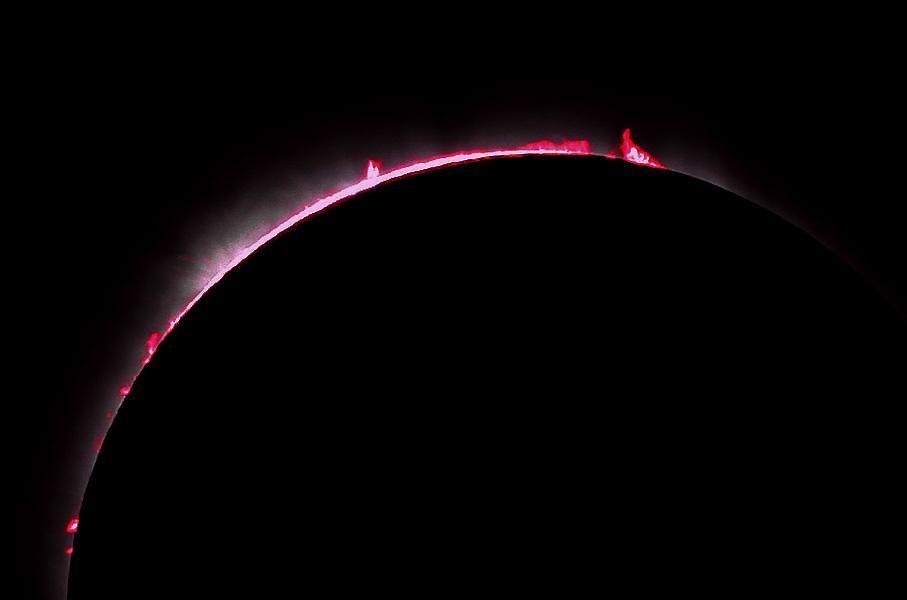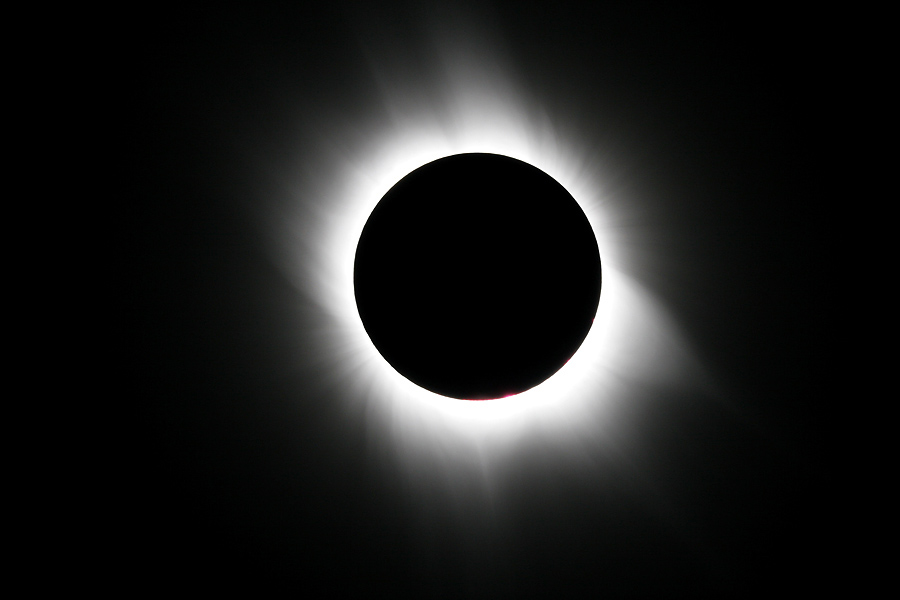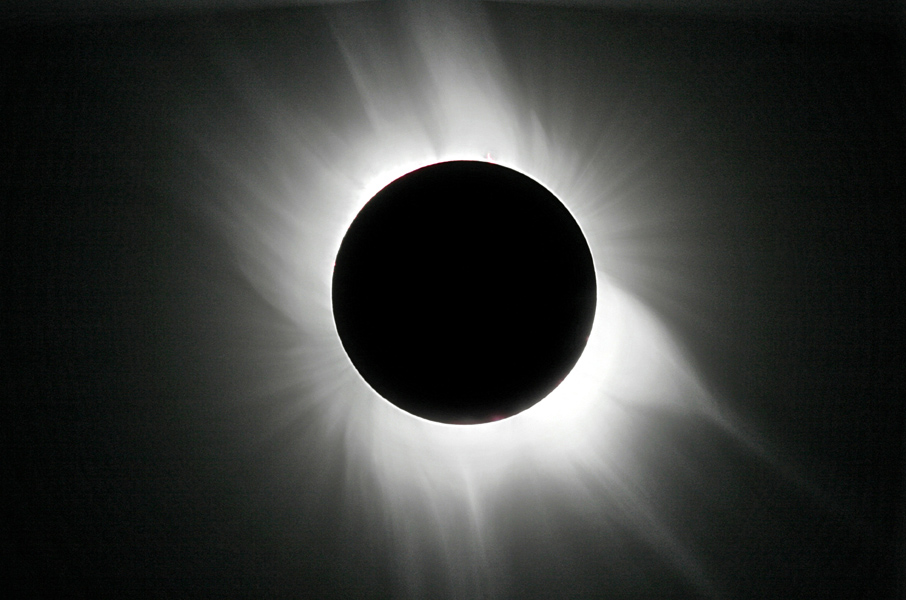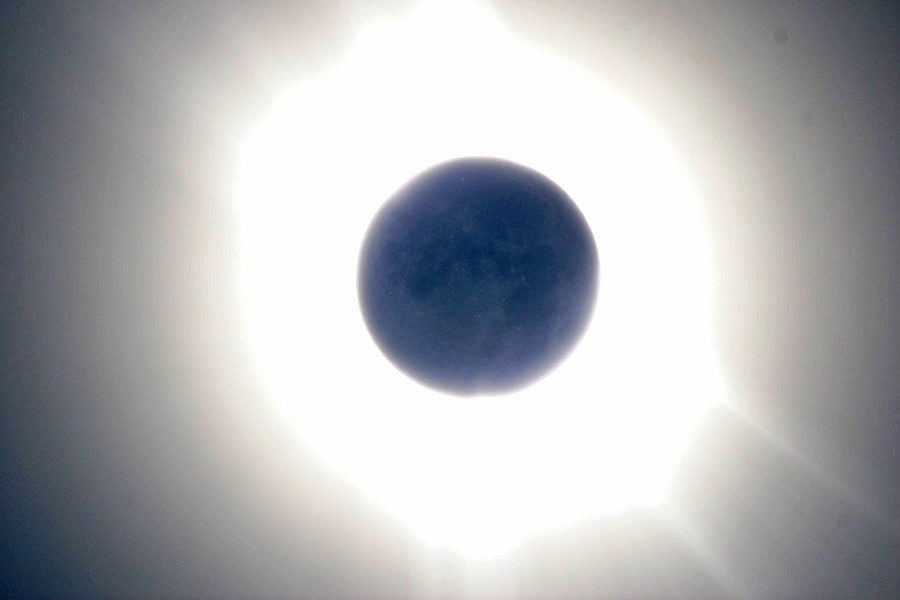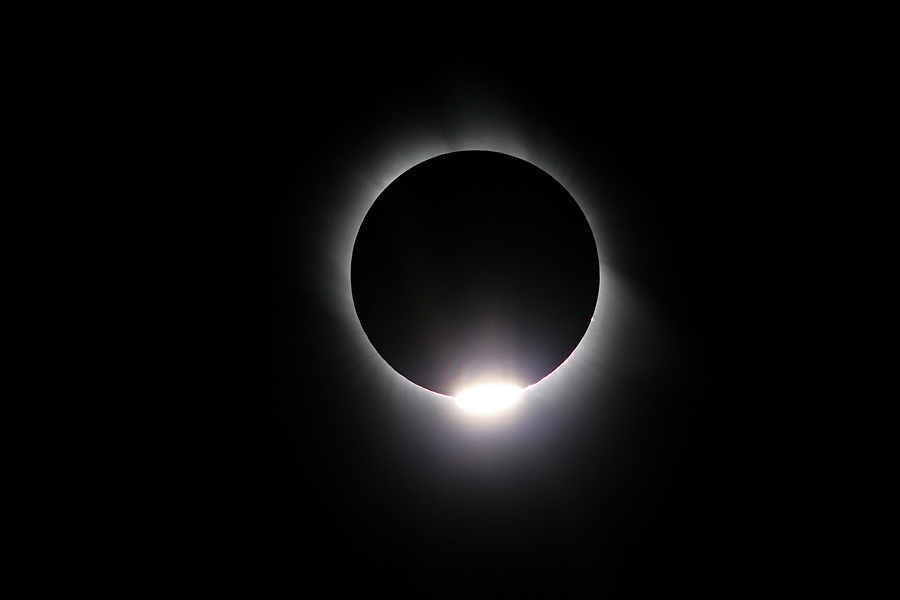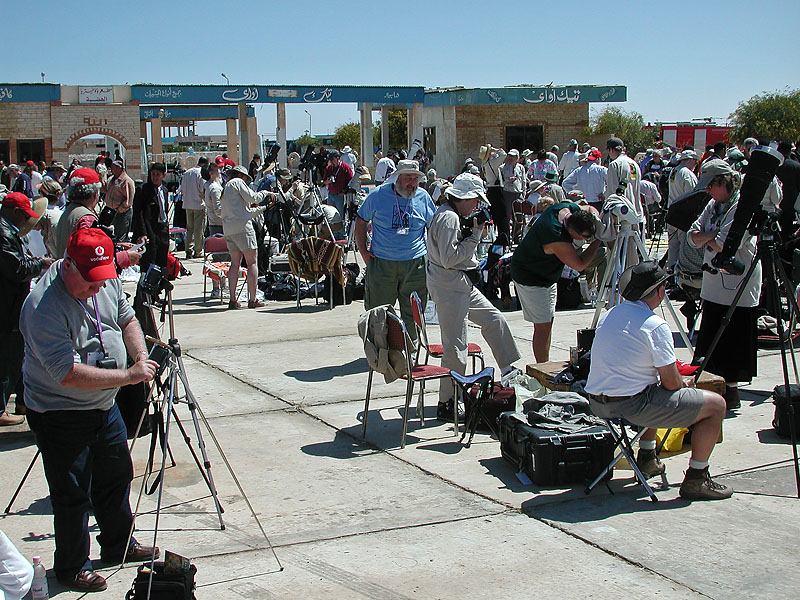Total Solar Eclipse: What to Expect as Moon Blocks Sun (Photos)
Solar Eclipse in Egypt, March 29, 2006
This portrait of the sun partially covered by the moon was taken by Imelda Joson and Edwin Aguirre through a solar-filtered telescope during the March 29, 2006 total solar eclipse in Egypt. WARNING: Always use a proper solar filter. Never look at the sun with your naked eyes, or through a telescope, binocular or camera viewfinder without a high-quality solar filter. Failure to do so can result in serious eye injury or blindness. The only time it is safe to gaze at the sun directly without any filter is during the brief period of totality, when the moon completely blocks the sun’s disk. Otherwise, you have to use a filter throughout the eclipse.
First Diamond Ring
The diamond ring just before second contact, which marked the start of the nearly four-minute-long totality on March 29, 2006. Imelda and Edwin used an exposure time of 1/800 sec. at ISO 400 for this shot.
Prominences and the Chromosphere
A close-up view of the chromosphere layer as well as solar prominences protruding from behind the moon’s disk on March 29, 2006. The exposure time was 1/800 sec. at ISO 400.
Enhanced View of Prominences and the Chromosphere
Imelda and Edwin used Adobe Photoshop to enhance the contrast and color saturation of the previous photo in order to suppress the overpowering brightness of the inner corona and bring out the chromosphere and prominences.
The Sun’s Glorious Corona
The sun’s outer atmosphere, or corona, on March 29, 2006 was surprisingly full of structure even though the sun then was at its minimum activity. The corona displayed at least six long, beautiful streamers that extended almost symmetrically in opposite directions, like a bow tie or pair of butterfly wings, before tapering off into the deep, velvety-blue sky. Note how the prominent hairlike brushes delicately traced magnetic-field lines above the sun’s polar regions.
Enhanced View of the Coronal Structure
Using Adobe Photoshop, Imelda and Edwin digitally combined and enhanced three exposures (1/800 sec., 1/60 sec., and 1/30 sec. at ISO 400) to bring out structural details in the corona. The corona’s long equatorial streamers and fine polar brushes are typical of the sun at minimum activity.
Details in the Moon’s Disk
Imelda and Edwin deliberately overexposed the corona to capture details in the moon’s silhouette, which is illuminated faintly by “earthshine,” the light reflected from Earth. On the lunar disk you can make out, among others, the dark shapes of Mare Imbrium, Mare Serenitatis, Mare Tranquillitatis, Mare Vaporum and Mare Nubium as well as the bright craters Tycho, Copernicus and Manilius.
Breaking space news, the latest updates on rocket launches, skywatching events and more!
Second Diamond Ring
The diamond ring immediately after third contact, which marked the end of totality on March 29, 2006. Imelda and Edwin used an exposure time of 1/800 sec. at ISO 400 for this scene.
Montage of the March 29, 2006 Eclipse
Imelda and Edwin created this montage of the March 29, 2006 total solar eclipse from individual photos they obtained from Salloum, Egypt.
Total Solar Eclipse 2006: Egypt Viewing Post
Total solar eclipse, March 29, 2006: The allure of seeing a total solar eclipse in a land that worshipped the sun during Pharaonic times was simply too hard to resist. That was why more than 2,000 eclipse chasers from all over the world converged on Salloum, Egypt, which sits high on a plateau near the Libyan border and overlooks the Mediterranean Sea. This photo was taken by veteran eclipse chasers Imelda Joson and Edwin Aguirre.
Total Solar Eclipse March 2006: Egypt Crowds
Total solar eclipse, March 29, 2006: The observing site at Salloum, Egypt, was jam-packed with eclipse chasers and their observing gear. Security was also extremely tight, as black-clad soldiers armed with automatic weapons cordoned off the area where then-Egyptian president Hosni Mubarak and other dignitaries had gathered to witness the historic event firsthand. This photo was taken by veteran eclipse chasers Imelda Joson and Edwin Aguirre.
Imelda B. Joson is a veteran astrophotographer, as well as an eclipse chaser and world traveler. With her husband, Edwin Aguirre, she has organized, led and/or participated in 11 solar eclipse expeditions in North America, Asia and Africa. The pair also conceptualized and created National Astronomy Week, an event that celebrates and publicizes astronomy in the Philippines.
